In Ferro Veritas: “When valor preys upon reason, it eats the sword it fights with.”
The art of Fencing:
"Poise, balance, proportion, simplicity, formal discipline, crastmanship, and universal and objective expression: a standard or model of excellence that has enduring value.
Fencing is a martial art that developed in Europe between the late 15th century and the middle of the 18th, and concerns the use of the sword in personal combat.
The emergence of fencing coincides with the decline of the feudal knight and the appearance of the bourgeois gentleman.
Fencers study the use of a sword as a civilian weapon for self-defense "on the street" as well as an arbiter of private disputes in the formal duel. The word "fencing" comes from the same root as the word "defend," meaning to "ward away" or "protect.
"Classical fencing," is the direct descendant of the 500 year evolution of the sword. Classical fencers strive to simulate as closely as possible a "frank encounter," that is, a real fight with sharp swords. Fencing is a science in that it concerns a systematized body of knowledge which demonstrates the operation of certain general laws and well established techniques.
On the simplest level are the physical benefits of practice: improved balance and coordination, and to some extent, strength, flexibility and muscular endurance, improves concentration, sensitivity, responsiveness, decisiveness and overall mental acuity and flexibility.
It is “applied axiology:" the physical manifestation of chivalric philosophy. For example, it is a long-standing tradition in fencing that the person who "receives a touch from" (is theoretically wounded by) the adversary, must acknowledge it openly.
A fencer never claims a touch against his/her opponent- or even inquires about one that has not been freely acknowledged. But if the adversary concedes a touch you do not believe was valid, you must decline credit for it by replying "Pas de touche," meaning "Not a touch." This is “chivalry,” the art of “gentlemen ship” which evolved from the code of honor of the knight, who ultimately received his rank and status from the king, who first received it from God…
Fencers are honor-bound to acknowledge all hits they receive and to allow an opponent who is on the attack to come forward and must parry a thrust before striking (post – riposte). An attack, therefore, is particularly unlikely to succeed if your opponent happens to be ready to receive it.
Fencers require the habit of being honest, gracious and, above all, self-responsible. The presence of an official does not relieve the fencer of his/her obligation of honor. A fencer considers it elementary, in fact, that nothing and no one can absolve you from personal responsibility for your own actions.
Fencing is the only one in which your opponent determines your score for you.
While a classical fencer places honor above all, even when it might cost him/her a touch, or bout or a tournament title, it is equally vital that fencing students come to appreciate the difference between "ego" and "honor." Ego says "Whatever I do is right." Honor says "Whatever is right, I will do."
Fencers learn early on is to accept their adversary on his/her own merits, as swordsmen who might kill you if he can, by skill and prowess with the weapon.
When crossing blades with a worthy adversary, there is a three-stage process a fencer learns to use to solve the living, breathing tactical and strategic puzzle facing him. Each action results in more information, upon which is based another decision for another action, which in turn brings more information and so on. It’s a chess game with weapons.
A fencing match, therefore, is nothing if not an exercise in critical thinking- carried on at a rather smart pace, too, I might add. The fencer must develop the ability to sort out truth from appearances- and to do so under somewhat adverse and rapidly changing conditions.
In summary, fencing cultivates in the devotee a strong, healthy body, an acute and agile mind, a gallant and gracious demeanor, and a dauntless and joyful spirit. It builds a person who is gentle in manner, firm in action, capable of critical thinking, able to recognize truth, courageous enough to speak it, and willing to defend it to the death.
FIGHTING:
Fighting: The goal of fighting is always self-defense
Become a tiger in attitude and in the fighting attributes of a tiger - tenacity, great courage, and daring ferocity. If you learn fighting only as a sport, your combative vitality and values will be compromised and eventually weaken your effectiveness. A martial spirit is not the ethos of a dancer although in practice both require certain choreography.
You must be ruthless, willing to kill and maim to take your opponent out of the fight.
Attack the groin, throat, eyes, and joints, anything necessary to win in a fight.
How you practice is how you will fight. Develop reflex habits that allow you to automatically counterattack to the assailant's vital areas while remaining keenly aware of your own vulnerability.
Most of the time, wait for the attack before moving into action. The values of sport are different than the values of a soldier or defender, because in sport, the student is training to attack to score points, so he develops the attitude of attack and not the attitude of counterattack from defensive posturing.
‘Fair play’ and the "you can't win 'em all" idea of being a "good sport about losing’ has no place on the field of battle. A fighter has everything to lose because his personal safety, maybe even his life or the lives of others are on the line. He cannot be a good loser. A fighter’s values is about protecting life at all costs, doing whatever is necessary to survive because the only reason you are fighting is to protect your life or the lives of your loved ones.
Also consider the climate, clothing being worn, time of day and night and the terrain, upon which the battle will be waged. These all combine to determine the tactics used and the emotional atmosphere of the fight. The environment can be a weapon…
A journey of 1,000 miles begins with the 1st step – but if it is a journey to wage war or combat, make sure it is your opponent who travels the 1,000 miles…
Fighting Multiple Opponents
All serious fighters consider multiple opponents. The student maintains the awareness of these multiple assailants while participating in solo training exercises or with a partner.
Many fighting styles consider a minimum of three enemies and build up to exercises involving five to seven enemies. A great deal of successful technique is a mix of grappling and hitting.
The grappling is a "loose" type of grappling where the moves are used for take downs, off-balance sweeps, and tying the opponent up momentarily. Even in the intricate and deadly holds of the Buah Kunchi of Malaysian Bersilat, a fighter can still quickly dissolve the hold in order to engage another assailant.
Being able to disengage from one person in order to move to another is essential in fighting multiple opponents. The fighter cannot commit to applying body pressure and leverage where he cannot make an immediate escape.
Hitting is used to tenderize and soften up the assailant before going into these intricate and complex techniques. This grappling / hitting mix maximizes flexibility and adaptability to meet the changing situation, whatever it is.
When a fighter finishes off his assailant with a take down and follow-up, he immediately crouches, covers, and assumes the "on guard" stance and posture combinations because another attacker may be on his way in.
The assailant that he just took down may not be finished after all. He may have been able to take all that punishment or he may be feigning his hurt condition, hoping the fighter drops his defenses and he can surprise re-attack.
It is important to take the assailant seriously at all times; that he is always dangerous even when down and especially when practicing in order to build this attitude so it is a habit.
This cautionary awareness has resulted in the overkill principle, which seems to be prevalent in all types of Southeast Asian self-defense. This being the repeated use of follow-up techniques after the assailant has been thought to already have been taken out. Experience tells experienced fighters that one or two strikes or breaks seldom finish the job at hand, therefore, for safety purposes, a variety of backups are built into a fighters reflexes through long hours of arduous training. Each backup technique has its own back up.
The Use of Weapons
Every fighter must learn to wield the traditional weapons such as the knife, the stick, the staff, the short sword, and the rope. No fighter can afford to be so foolish, or so naïve as to train exclusively in the use of empty hand tactics for solving all combats.
The use of these weapons and other objects are based on the same technical rationale as the empty hand curriculum of hand movement and footwork. In this way, objects from your daily surroundings such as pens, combs, drinking receptacles, shoes, belts and eating utensils, even a salt shaker can be brought into play to enhance the fight.
In self-defense, the environment is to be used when possible if time permits, because the assailant, even if empty-handed may be concealing a weapon of his own. Every move must be treated carefully.
With this unifying coherence planted in the fighter’s mind, he can substitute and transfer the use of weapons to the techniques he already knows empty-handed. His skill is already built in from his empty hand training.
The goal of training is to fight without being confused about what should come next in any moment of a fight. These unifying principles are based on the physics of efficiency of technique and economy of motion, and are keys to any success in fighting.
There will always be endless variations of empty hand techniques. There are so many that it is impossible to name them all. They all stem from the root techniques of the empty hand curriculum.
A skillful fighter will make use of all parts of the body for locking, joint breaking or as striking weapons. Substituting a shoulder for an elbow, for example, one can produce the same joint / lock conceptually. The various hand formations similar to the crane beak, tiger claw, eagle claw, panther fist, like those used in Kung Fu can be adapted in the moment, to the various techniques.
Every fighter must learn the vulnerable points of the body to be exploited with any techniques he has already learned. Like a road map, the routes to vulnerable body parts are already known and in place can be hit, pinched, torn or squeezed.
This will add depth and maturation to techniques already mastered by the fighter. They will be especially useful against larger assailants
Learn well, Grasshopper…
Code of Chivalry
KNIGHT
A knight was to follow a strict set of rules of conduct. The ideals of knighthood were the Knightly Virtues; the code to which they were nominally sworn was that of chivalry, although this was more often true in troubadours' romances than in reality. These codes were largely propagated by the Church - the original knights were little more than unruly warriors. The Church promoted the ideals of chivalry, with arguable success, in an attempt to transform them into warriors for Christianity, the protectors of society. These idealized rules were observed more in the breach than in practice. A knight often fought with a shield, sword, and lance, was mounted, and wore armor of varying type and function, often according to what he could afford and which improved over time with technological advancements.
Roland pledges his fealty to Charlemagne.
From a medieval illuminated manuscript. Depicted is part of a ceremony to create a knight, to tie a sword belt on the knight was part of the ceremony. Although, at some point before in the ceremony fealty was previously made by placing a hand on a bible or saints relic, this image is of the belt tying part of the ceremony. It symbolizes the knights’ membership of the "fighting class."
PALADIN
A paladin is the prototypical "knight in shining armour," a hero of sterling character and courage, who rights wrongs and defends the weak and oppressed. The word comes from the Latin word palatinus ("attached to the palace") - compare palatine.
The original paladins of legend appeared as the heroes of the Chanson de Roland and of the other romances of chivalry which told of the legendary court of King Charlemagne.
Legends originally tell of twelve paladins attached to Charlemagne's court. The best-known list comes from the Italian epics of Tasso and Ariosto and their successors; it includes:
Astolpho, descended from Charles Martel and a cousin of Roland. Handsome and swaggering; he went to the moon to fetch back Roland's brains when he went mad, as told in Orlando Furioso
Ferumbras the Saracen who became a Christian
Florismart, friend of Orlando
Ganelon the betrayer, who appears in the Inferno by Dante Alighieri
Guy de Bourgogne
Maugris the sorcerer
Namo
Ogier the Dane (in more recent years the subject of a story by Poul Anderson)
Oliver, rival to Roland
Otuel, another converted Saracen
Rinaldo
Roland, Charlemagne’s nephew, called Orlando in Italian: the chief hero among the paladins.
The Chanson de Roland contains a different and much earlier listing of the twelve Peers of France; this list names:
Roland
Olivier
Grin
Grier
Brengier
Otton
Samson
Engelier
Ivon
Ivoire
Ansis
Girard
Tales of the paladins of Charlemagne once rivalled the stories of King Arthur and the knights of the Round Table in popularity.
Ludovico Ariosto and Torquato Tasso, whose works were once as widely read and respected as Shakespeare's, contributed most prominently to the literary/poetical reworking of the tales of the epic deeds of the paladins.
The tales told of the paladins took as their subject matter the wars between the Franks and the Moors during the Islamic conquests of Spain and their invasion of southern France. Their adventures became known as the "Matter of Charlemagne" or "Matter of France", even as the adventures of King Arthur and his knights classed as the "Matter of Britain."
The late nineteenth century Celtic revival benefitted the Arthurian material and encouraged its reworking and recirculation. No such aura of latter-day romance could assist the Charlemagne material, which remained strongly Christian and triumphalist in its presentation. As a result, twentieth-century readers know Arthur and his Camelot well while hearing little of the paladins of Charlemagne, who once enjoyed equal renown.
The CODE:
· Thou shalt defend the teachings of Christ, the Ten Commandments, and live the Lord’s Prayer.
· Thou shalt respect all weaknesses, and shalt constitute thyself the defender of them.
· Thou shalt love the country in the which thou wast born.
· Thou shalt not recoil before thine enemy.
· Thou shalt make war against the Infidel without cessation, and without mercy.
· Thou shalt perform scrupulously thy feudal duties, if they be not contrary to the laws
of God.
· Thou shalt never lie, and shall remain faithful to thy pledged word.
· Thou shalt be generous, and give largess to everyone.
· Thou shalt be everywhere and always the champion of the Right and the Good against Injustice and Evil.
The Nine Points of Chivalry
Prowess:
Excellence in all endeavors expected of a knight, martial and otherwise, seeking strength to be used in the service of justice, rather than in personal aggrandizement.
Justice:
Seek always the path of 'right', unencumbered by bias or personal interest. Recognize that the sword of justice can be a terrible thing, so it must be tempered by humanity and mercy. If the 'right' you see rings agrees with others, and you seek it out without bending to the temptation for expediency, then you will earn renown beyond measure.
Loyalty:
Be known for unwavering commitment to the people and ideals you choose to live by. There are many places where compromise is expected; loyalty is not amongst them. Defense: The ideal knight was sworn by oath to defend his liege lord and those who depended upon him. Seek always to defend your nation, your family, and those to whom you believe worthy of loyalty. First be loyal to God.
Courage:
Being a knight often means choosing the more difficult path, the personally expensive one. Be prepared to make personal sacrifices in service of the precepts and people you value. At the same time, a knight should seek wisdom to see that stupidity and courage are cousins. Courage also means taking the side of truth in all matters, rather than seeking the expedient lie. Seek the truth whenever possible, but remember to temper justice with mercy, or the pure truth can bring grief.
Faith:
A knight must have faith in his beliefs, for faith roots him and gives hope against the despair that human failings create. Faith is the substance of things hoped for, the evidence of that not seen.
Humility:
Value first the contributions of others; do not boast of your own accomplishments, let others do this for you. Tell the deeds of others before your own, according them the renown rightfully earned through virtuous deeds. In this way the office of knighthood is well done and glorified, helping not only the gentle spoken of but also all who call themselves knights.
Largesse:
Be generous in so far as your resources allow; largesse used in this way counters gluttony. It also makes the path of mercy easier to discern when a difficult decision of justice is required. Generosity will keep you free from avarice.
Nobility:
Seek great stature of character by holding to the virtues and duties of a knight, realizing that though the ideal cannot be everywhere and at all times be reached, the quality of striving towards virtue ennobles the spirit, growing the character from dust towards the heavens. Nobility also has the tendency to influence others, offering a compelling example of what can be done in the service of rightness.
Franchise:
Emulate everything I have spoken of as sincerely as possible, not for the reason of personal gain but because it is right. Seek to infuse every aspect of your life with these qualities. Should you succeed in even a tiny measure then you will be well remembered for the quality and virtue of your character.
The Code of Chivalry (II)
Live to serve God, King, and Country.
Live to defend Faith, Crown, and Country and all that is held dear to them.
Live one's life so that it is worthy of respect and honor.
Live for freedom, justice and all that is good.
Never attack an unarmed foe.
Never use a weapon on an opponent not equal to the attack.
Never attack from behind.
Avoid lying to your fellow man.
Avoid cheating.
Avoid torture.
Obey the laws of your God, the king, and of chivalry.
Administer justice.
Protect the innocent.
Exhibit self control.
Show respect to authority but root out corruption.
Respect women.
Exhibit Courage in word and deed.
Defend the weak and innocent.
Destroy evil in all of its monstrous forms.
Crush the monsters that steal our land and rob our people.
Fight with honor.
Avenge the wronged.
Never abandon a friend, an ally, or a noble cause.
Fight for the ideals of king, country, and chivalry.
Die with valor.
Always keep one's word of honor.
Always maintain one's principles.
Never betray a confidence or comrade.
Avoid deception.
Respect life and freedom.
Die with honor.
Exhibit at all times and in all places the manners of a gentleman.
Be polite and attentive.
Be respectful of host, women, and honor.
Loyalty to country, King, honor, freedom, and the code of chivalry.
Loyalty to one's friends and those who lay their trust in thee.
CONDITIONING FOR A FIGHTER:
1.) Conditioning Drills
Conditioning drills bring anaerobic strength and stamina to new levels. Fighting is an explosive sport that requires a unique combination of speed, power, and stamina.
Many fighters are misled to believe that long, slow-paced runs satisfy their conditioning needs. Fighting is NOT a sport fought at a slow, leisurely pace. We must pattern our training to mimic the ballistic nature of fighting.
2.) Plyometrics Training
Plyometrics consist of a variety of exercises that enhance starting speed, acceleration, and power. These exercises consist of bounding, jumping, lifting, and medicine ball drills. By strengthening the nervous system, plyometrics conditions the body to react explosively to maximize speed and power.
3.) Strength Training
When two equally skilled fightera square off, the stronger man usually wins: Strength translates into striking power and the ability to “manhandle” your opponent. Speed rarely beats a combination of speed AND power. The fighter needs a specifics strength program designed to maximize speed, power, and anaerobic endurance for the fight.
4.) Running Drills
Morning roadwork is an important element of a fighter’s conditioning. Proper running will increase aerobic and anaerobic strength and endurance. Unfortunately, most fighters do not follow a boxer's running program, which is training to fight, not to run marathons. Sprint work, at intervals during other training, and variations of anaerobic and aerobic running drills is an excellent technique to build stamina for a fighter.
5.) Swiss Ball Training
Swiss ball training is one of the latest fitness trends. When you exercise with the Swiss ball, you balance yourself on an unstable environment. For example, rather than bench press a barbell on a regular flat bench, you can lie on the ball and perform a dumbbell press.
Fighting involves dodging, ducking, feinting, kicking, blocking, punching, holding, and throwing your opponent(s). These movements are made going backwards, frontward, or sideways, and sometimes from the ground. Such movements can leave a fighter off balance or out of position. The Swiss ball trains your body to operate as one interconnected, functional unit.
6.) Nutrition and Supplementation
Proper diet and supplementation will improve performance by increasing energy, promoting muscle growth, and fostering post-workout recovery. You will be able to train harder and recover faster. When you are able to train harder, your fitness levels will improve proportionately.
Vitamins, minerals, meal planning, calorie requirements, and performance enhancing supplements are all fuels your body needs to MAXIMIZE PERFORMANCE. By maximizing your conditioning you will optimize speed, and power and performance. The ability to outwork your opponent will increase.
7.) Fighting Is A Skill Sport
Fighting is most importantly a skill that relies on a highly conditioned body, but training to fight is still the most important aspect of learning when, why, and how to do something to your opponent. Several skill improvement drills for punching the heavy bag, speed bag, and double-end bag are critical in order to strike with effectiveness, and the importance of sparring cannot be overlooked.
8.) Training The Mind
Confidence in your fighting ability will come with conditioning and training. You must have the intention of knocking your opponent out. You must also realize that your opponent has the very same intention.
This realization can cause nervousness and fear inside. You may start to doubt and question your ability before the bout has even begun. You essentially “psyche” yourself out.Experience and mental training will help overcome doubts. Every fighter or soldier has at one time in their lives had to overcome fear. Champions and heroes rise up to the challenge while others succumb and crumble, so one must train the mind as well as the body in the arena of personal conflict.
9.) Putting It All Together
A complete 12-week routine that integrates
Fighting Skill Training. (Including Sparring)
Weight training.
Plyometrics.
Conditioning drills. (Running and Sprinting)
This training can be conducted with little or no equipment.You can use these training techniques anywhere.
RUNNING:
Wake up by 5:30 and start running by 6 after a brief warmup.
Roadwork consists of hill running, sprints, and rigorous interval training. The morning session is important and deserves commitment. There will be those days that you are tired, or it is raining outside, or the winter wind is blowing, but a fighter must be ready to be uncomfortable: it is called DISCIPLINE: the decisions must be made by on your own.
Routines:
Typical routine consists of morning running followed by an afternoon trip to the gym. And train for 2 hours each evening. Training may consist of shadow boxing, heavy-bag drills, focus mitt work, speed and double-end bag drills, jump rope, and actual sparring.
Also incorporate a strength training routine 2 or 3 days per week. Each day work on something slightly different and never go through the exact workout twice. For example, practice fighting against a left handed fighter by circling to my left and throwing lead right hands. Another day, practice fighting on the inside with short hooks and uppercuts.
Do not get so structured that you do the same thing every workout.
Roadwork:
Roadwork consists of hill running, sprints, and rigorous interval training. The morning session is important and deserves commitment. There will be those days that you are tired, or it is raining outside, or the winter wind is blowing, but a fighter must be ready to be uncomfortable: it is called DISCIPLINE: the decisions must be made by on your own.
Balance Training:
Vestibular Retraining Therapy (VRT) is a form of specific exercises that increase functional performance and endurance of your balance system - your eye and postural stability - with particular emphasis on the vestibular system.
With impact or stress by sudden motion, the brain will tell the body drift to the right or left, and it will be harder to maintain equilibrium and you may also experience decreased endurance.
A test: Try to stand in place with your eyes closed and march 60 paces on a level surface. At 60 open your eyes and see where you are. A balance dysfunction will cause you to drift forwards and to the right or left. This is a gross measurement of balance function. An abnormal response may mean some VR therapy is necessary.
Strength Training:
Weight training creates stronger athletes. A strong opponent is a dangerous opponent. Weight training can also make fighters less susceptible to injury by strengthening muscles, bones, and ligaments. In addition, strength training can increase explosive power and anaerobic endurance.
Fighting is said to be approximately 70-80% anaerobic and 20-30% aerobic. Anaerobic means to conduct an activity without oxygen. Anaerobic exercise uses muscles at a high intensity for a short period of time.
This equates to the fast combinations of blocking and striking that a fighter uses. Aerobic exercise is defined as lower intensity activities performed for longer periods of time such as when you circle your opponent looking for opportunities to strike or to keep him off balance and diminish his endurance.
Weight training for fighters should be performed at between 55-80% of maximum lift ability for a desired exercise. For example, if you can bench press 100 pounds for 1 repetition, perform your strength training with weights between 55 and 80 pounds with 8-10 reps per exercise, 1-3 sets per exercise.
When preparing to strength train, be sure to properly warm your body up for the rigorous training that lies ahead. Do plenty of stretching and a little aerobic exercise.
Move the weight in an explosive manner to maximize explosiveness and strength. Do not perform slow lifts with light weight. Training for power not for body sculpture. Explosive, ballistic movements will increase abililty to throw explosive combinations of punches, kicks, blocks, sweeps, and throws.
Bench Press - Targets the chest, triceps, and shoulders
Power Cleans - A full body movement that works the entire body
Squats - Targets the legs and trunk
Military Press - Targets the shoulders
Arm Curls - Targets the biceps
Bent Over Rows - Targets the upper back
Neck Rolls/Curls – build up neck muscles and flexibility
ALWAYS USE A MOUTH GUARD
Physical Training for the Soldier
The following information is provided for individuals preparing for the physical demands of basic combat training (BCT). The staff of the U.S. Army Physical Fitness School (USAPFS) prepared the information. The USAPFS is responsible for developing the Physical Readiness Training Programs, researching the army’s physical readiness needs, and providing training support to the force.
As a future soldier you are encouraged to begin a physical training program well before reporting for BCT. However, do not begin a physical exercise routine before obtaining a passing physical examination from a qualified physician. Remember to keep your body hydrated. A moderate amount of water will help your body function more effectively and prevent some injuries. Be aware of your environment and dress appropriately; do not exercise in climates that are extremely hot or extremely cold. Exercise with a buddy; it helps to motivate you and there will be someone there in the event of an injury. Although a little muscle soreness is to be expected when beginning a new exercise program, do not aggravate any injuries by continuing to exercise under circumstances of pain or discomfort.
1. ENDURANCE TRAINING, The Walk to Run Program
All soldiers in Basic Combat Training (BCT) must pass the Army Physical Fitness Test (APFT) to graduate. Currently, this test includes a timed, two-mile run event. Time standards are based on age and gender. They can be found at http://www.benning.army.mil/usapfs . If you are not running on a regular basis now, see 1A. Getting Started below. If you are active in sports or accustomed to running, go to 1c. Run Progression below.
1A. Getting Started - Minimal
Plan on spending 30 minutes exercising, three times per week. (Not including the strength building exercise sessions.) It is best to start on a soft surface such as a track, a level grassy field or a dirt path. Proper fitting running shoes are important. For more information on selecting the best shoe for your feet, see http://www.benning.army.mil/usapfs/ . The following guidelines assume that you are able to briskly walk for 30 minutes without stopping. If you are unable to do so, you must gradually progress your walking until you meet this goal. For example, if you must stop or slow significantly at 20 minutes your first time out, try to add only one minute to each subsequent walk until you reach the 30-minute goal.
Once you are able to walk briskly for 30 minutes, you are ready to add some jogging. But for the first 5 minutes of your workout, you must walk: No running! Likewise, for the last 5 minutes of your workout you must walk: Again, no running! This is to allow your body to warm-up and cool-down from the main walk-run effort. For the middle twenty minutes, follow the 30/30 Plan described below in 1B. Use the Recommended Physical Training Schedule for DEP Soldiers on page 6 to guide your training.
1B. The 30/30 Plan
Once comfortable walking for thirty minutes, adopt a 30/30 pattern: jogging 30 seconds, walking 30 seconds, etc. for the middle 20 minutes of your workout. Follow this 30/30 pattern for 30 days.
If you are unable to resume running at 30 seconds, continue walking until you are recovered, jog 30 seconds again. Jog, walk. Jog, walk. Jog, walk. Repeat for the middle 20 minutes of the workout, then walk the last five minutes as mentioned above. You are less likely to suffer foot and leg soreness by performing this workout every other day. You may walk on the off days, but limit the time to 30 minutes. Running form is important - review the information on running form at the end of this article. If you choose to use indoor exercise equipment as a substitute for walking on the off days (or as a replacement for running on bad weather days) read the article at http://www.benning.army.mil/usapfs/ .
1C. Run Progression
You are now ready to progress to the next stage of your training as a beginning runner. Gradually increase the time spent running or decrease the walk time. For example, following the Recommended Physical Training Schedule for DEP soldiers on page 5, you see that week five calls for 45 seconds of running instead of the 30 seconds that you have been doing. At the end of the week, you are asked to run ½ mile without stopping. Do this at an easy pace, and remember to begin and end each session with 5 minutes of walking. By the end of week eight, you will have run 1 ¼ miles without stopping. You are now prepared for the first Army running assessment – the 1 mile run. If time in the delayed entry program permits, continue to progress your running up to the 2-mile mark by adding a ¼ mile each week. Once you are comfortable with the 2-mile distance, gradually work on increase the pace of your runs.
1D. Running Form
Most discussions of how to improve running center around various workouts designed to improve speed. Often overlooked, however, is the efficiency of the running form itself. Since running form among elite runners can vary significantly, there is a tendency to let the individual find a gait to their liking and leave it alone. Indeed, running is a very fluid, natural act that may be inhibited by over-analysis. However, there are several things runners can do to improve their efficiency without overhauling their natural style. Most runners will find one or two points on which they can improve.
• Head: The head should remain over its base of support – the neck, with the chin neither pointing up or down. Allowing the head to ride forward puts undue strain on the muscles of the upper back.
• Shoulders: The shoulders should assume a neutral posture – neither rounded forward or forcefully arched backward. Rounding the shoulders forward is the most common fault in everyday posture as well as with running. This is usually associated with tightness of the chest and shoulders. Another problem occurs when the shoulders start to rise with fatigue or increased effort. This position not only wastes energy, but can also adversely affect breathing.
• Arms: Throughout the arm swing, the elbows should stay at roughly a 90-degree bend. The wrists stay straight and the hands remain loosely cupped. The arm swing should be free of tension, but do not allow the hands to cross the midline of the body.
• Trunk and Pelvis: Like the head, the trunk should remain over its base of support – the pelvis. A common problem with fatigue is allowing the trunk to get in front of the legs and pelvis. This forces the lower back muscles to spend too much energy resisting further trunk collapse to the front.
• Legs: For distance running, much of the power comes from below the knee. Energy is wasted as the knees come higher and the big muscles around the hips and thighs get involved. Practice getting a strong push-off from the ankle of the back leg. This helps to naturally lengthen the stride. Lengthening the stride by reaching forward with the front leg will be counterproductive.
• Feet: For most soldiers, the feet should be pointing directly forward while running. With fatigue and certain muscle imbalances, the legs and feet will start to rotate outward. This hinders performance and may create abnormal stresses that cause injury. Refer to the Shoe Selection article http://www.benning.army.mil/usapfs/ on the USAPFS website for detailed information on the biomechanics of the feet and the best means of choosing a running shoe.
2. STRENGTH TRAINING
Strength refers to your ability to overcome resistance. Basic combat training (BCT) will challenge your strength on obstacle courses, buddy carries, and during daily activities that involve lifting. The Army Physical Fitness Test will also require strength and endurance to perform the push-up and sit-up assessments. While the Physical Readiness Training Program in BCT will develop your strength, it is wise to begin strength training several weeks before your arrival.
2A. Getting Started
Beginning strength training does not require a gym or expensive equipment. In fact, it is best to start with just the resistance of your own body and a light set of dumbbells. Calisthenics and dumbbell exercises can be performed at home in a relatively small space and in a time-efficient manner. They build strength by challenging control of your body weight and light resistance. Below are twelve calisthenic (Calisthenic Drill 1) and six dumbbell (Dumbbell Drill 1) exercises have been developed that improve your ability to squat, reach, twist, lunge, jump, land, push and get up and down – exactly the type of actions demanded of soldiers negotiating obstacles, lifting equipment, getting in and out of vehicles and performing other demanding soldier tasks.
Use the Recommended Physical Training Schedule for DEP soldiers on page 5 to guide your training. In general, you should strive to alternate strength training days with walking/running or some other form of aerobic exercise. So, plan on two or three days of strength training each week.
2B. Calisthenic Drill 1
Calisthenics lose much of their value unless performed exactly as prescribed, so make sure to carefully review the description and check points for each exercise. Five repetitions for each exercise are appropriate while learning the exercises. Practice each exercise at a slow pace until you master the correct form. Gradually progress the number of repetitions performed, stopping at 10. One repetition for each period of exercise is an approximate rate of increase. This rate is continued until 10 repetitions, with no rest between exercises, can be completed. Avoid overtraining, which may lead to unnecessary soreness or injury.
2C. Dumbbell Drill 1
Dumbbell training is also an effective way to build strength. The Army uses six dumbbell exercises that were developed with the calisthenic drill. Start with a pair of lightweight dumbbells (8-10 lbs. for men and 2-5 lbs. for women). When learning the six exercises, perform no more than five repetitions at a time and concentrate on correct form. Practice each exercise at a slow pace until you master the correct form. Gradually progress the number of repetitions performed, stopping at 10. One repetition for each period of exercise is an approximate rate of increase. Perform the entire drill, and then repeat for a second or third set of exercises, depending on your level of conditioning. Your best training benefits will come from precise, controlled movements, not a lot of fast, sloppy repetitions. Gradually increase the weight of the dumbbells as you become proficient with each exercise and 10 repetitions are easily achieved. Do not sacrifice form for increases in resistance. You may find that you can progress to heavier dumbbells for some exercises, while using lighter weights for others
3. MOBILITY TRAINING
In addition to strength and endurance, soldiers must have adequate mobility to perform their duties well. Army physical readiness training (PRT) defines mobility as movement proficiency. Basically, this means how well you move. To move well during PRT and other demanding BCT activities, soldiers must have good agility, balance, coordination, flexibility, power, speed and stability. Two PRT drills are particularly useful for new soldiers looking to improve their mobility for BCT – Guerrilla Drill 1 and the Recovery Drill. Use the Recommended Physical Training Schedule for DEP soldiers on page 5 to guide your training.
3A. Guerrilla Drill 1
This drill requires a flat, open space of approximately 35-40 yards. Grass is the preferred surface. Sports teams in preparation for their practice or a game often perform the set of six exercises. Guerrilla Drill 1 is important for soldiers because it improves footwork and strengthens the running stride.
Perform Guerrilla Drill 1 as part of a workout that includes other drills. Begin with just one repetition of each of the six exercises. One repetition means going 25 yards, resting for approximately 20 seconds, and then returning to the start point. Add one repetition each week until you are able to perform 4-6 without excessive fatigue.
3B. Recovery Drill
This drill may be performed indoors. Since you will be on the floor for some of the exercises, a cushioned exercise mat is useful. The Recovery Drill improves mobility by increasing range of motion of key muscle groups and strength of the trunk muscles that protect your spine. It is named the Recover Drill because it is used after the main exercise activities to gradually return the temperature and heart rate to resting levels. In addition to performing the Recovery Drill after your endurance and strength exercises, it is important to drink plenty of water to replace that lost as sweat. Soon after the workout you should also replenish calories with a well-balanced meal.
METABOLISM
The one thing that really does help you lose weight or stay slim is how efficiently your metabolism works, and it comes down to burning more calories or the same amount of calories you consume in a day.
If you're doing a cardiovascular activity (running, biking, swimming, walking), you burn calories for the duration of the time you're exercising.
When you build muscles, your muscles become a calorie-burning machine. If you lift weights for an hour. Your muscles will burn calories all day long.
A study done by Tufts University that those who resistance-trained for 15 weeks increased their metabolic rate by 15%. That's 1% a week.
How? By building muscle tissue with weight training, you create tissue that burns calories even when they're not exercising.
When you go on a starvation diet, the first place your body attacks for calories is not the stored fat, it's the healthy yummy muscle tissue. Muscle is your metabolism.
If you want to take care of your metabolism function, then try to get decent sleep and don't skip meals (especially breakfast). You start off your day behind the metabolic eight ball if you skip the first meal of the day. Your body spends the rest of the day playing catch up, and you're not functioning at an optimum level.
Once you get this system dialed:
Eat well,
Exercie
Adding resistance training to your life
Prime the water pump. Yes, you have to work hard in the beginning to get the water out, but once things start flowing, then you just have to tap the handle to get a bucket of water. Look at your calorie burning efficient self the same way.
Subscribe to:
Post Comments (Atom)









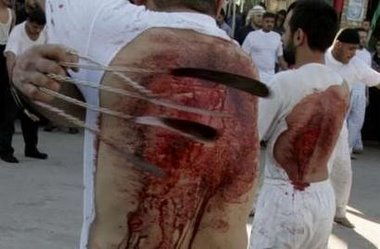



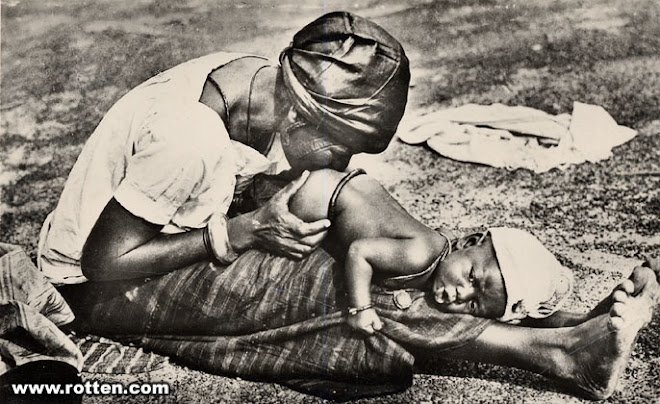






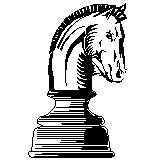








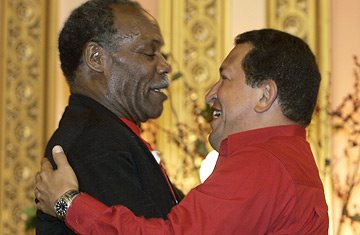

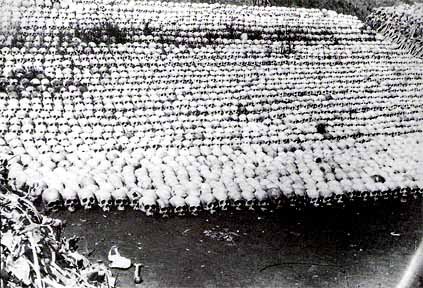
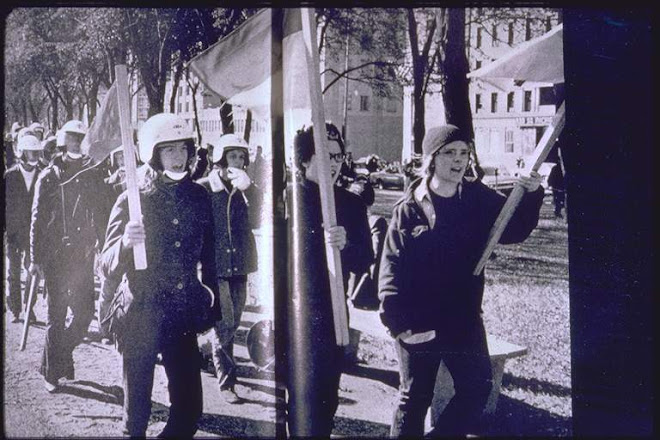
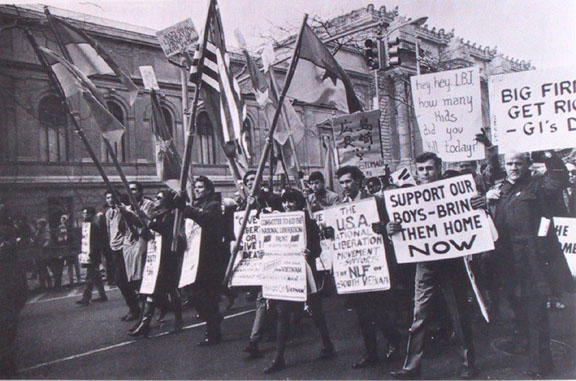







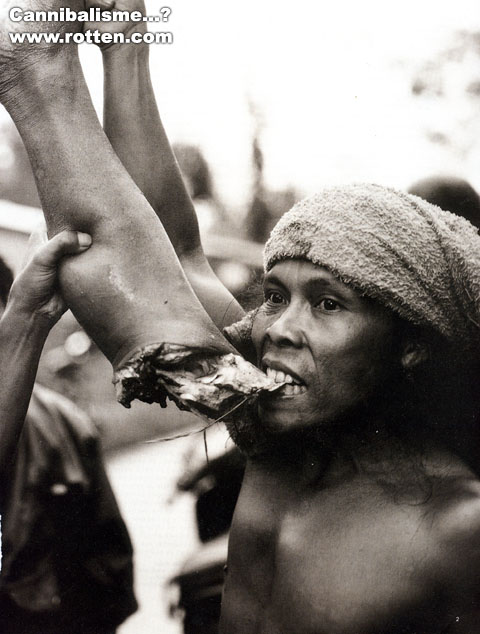


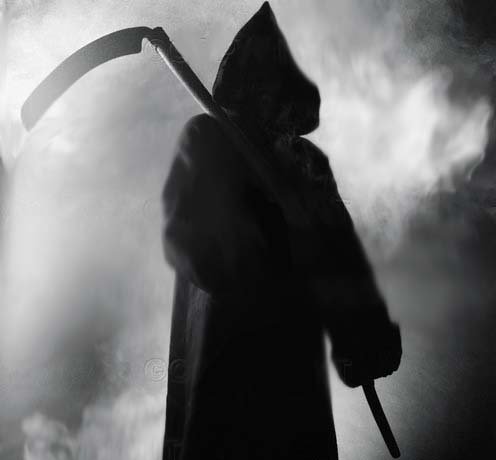






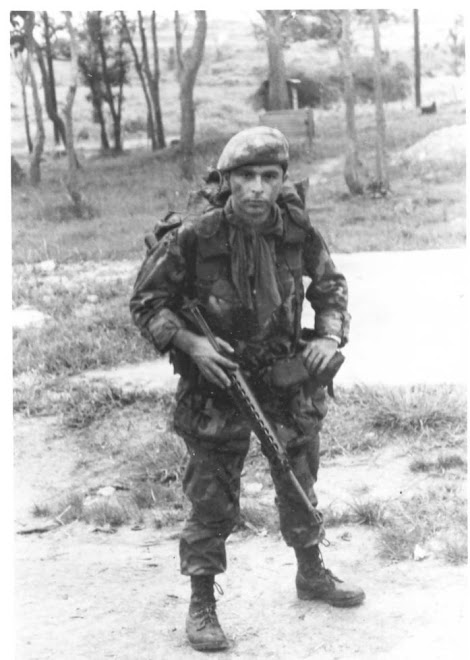
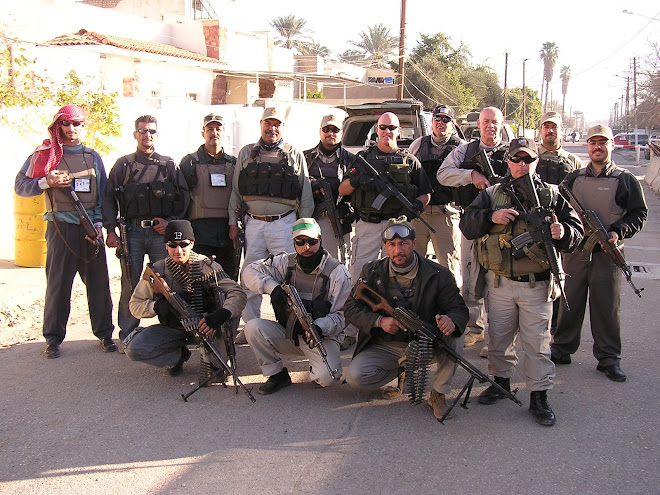
No comments:
Post a Comment